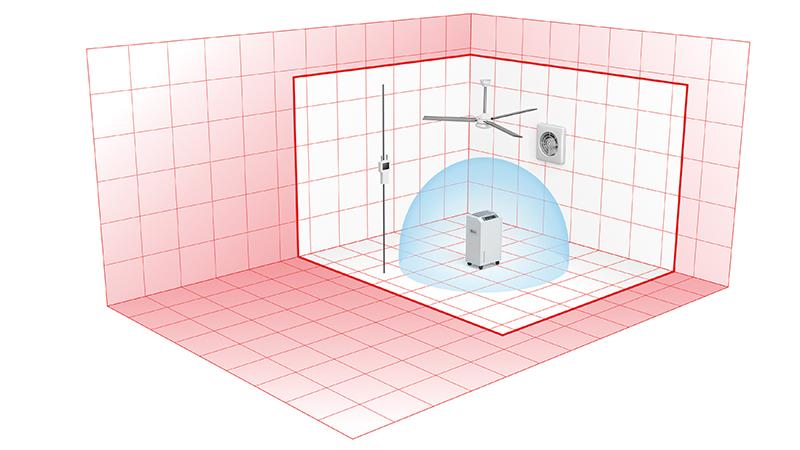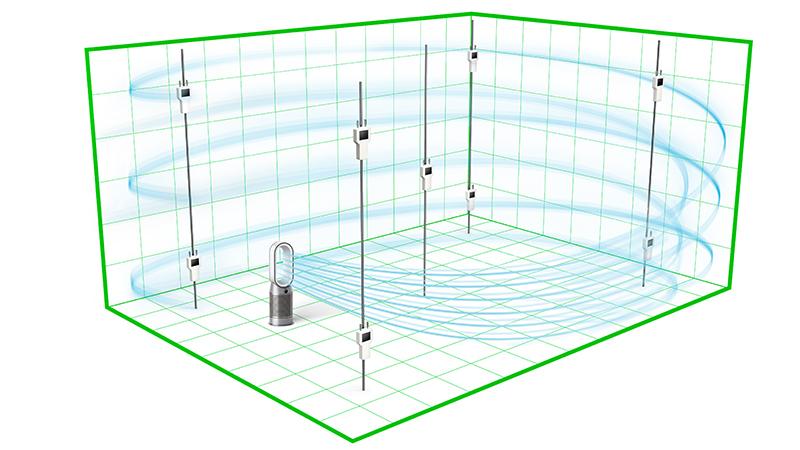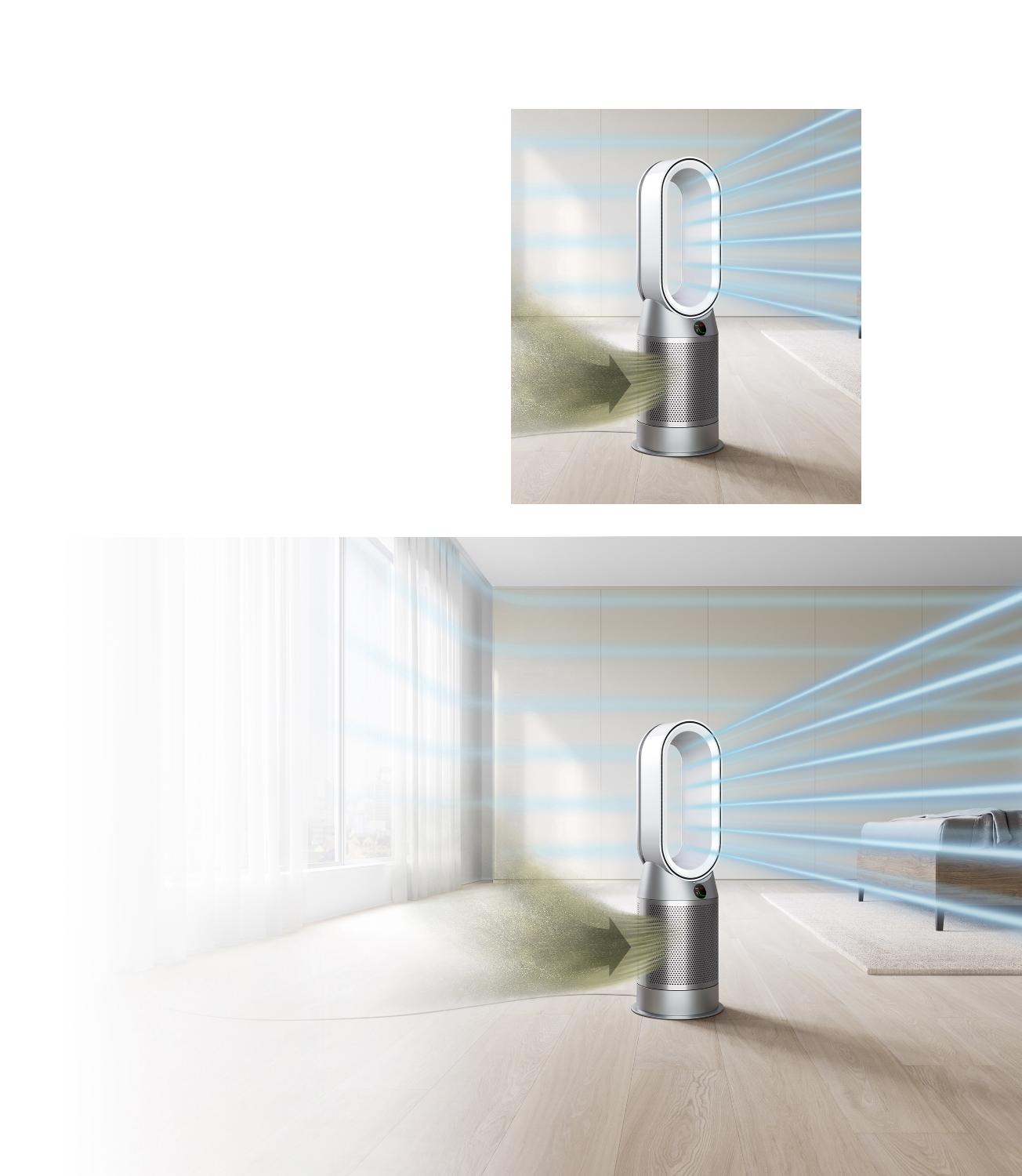
Captures dust, allergens and viruses¹
Removes 99.95% of ultrafine particles²
Purifies and heats the whole room³
Fully sealed to HEPA H13 standard⁴
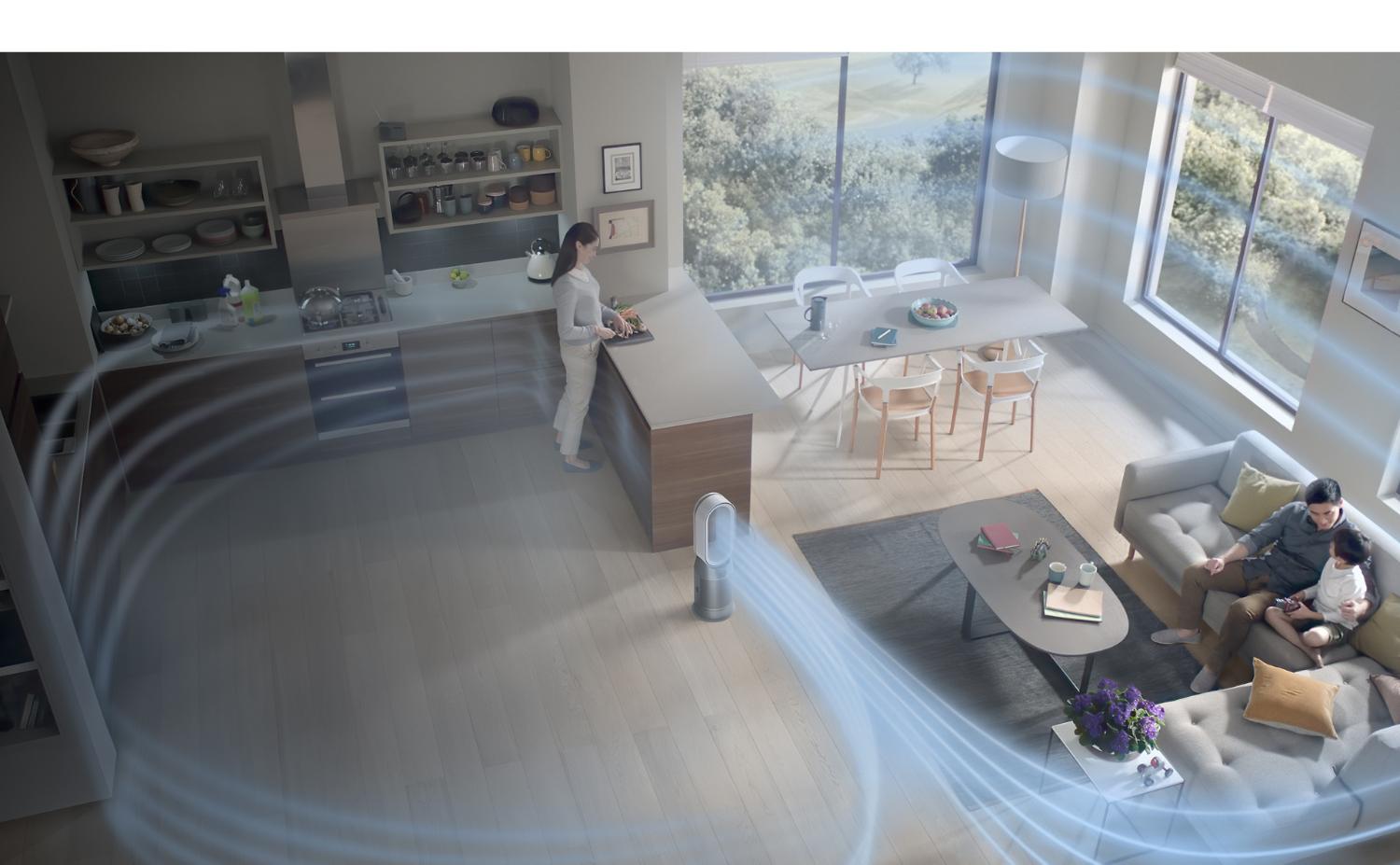
Powerful circulation to purify the whole room
Only Dyson purifiers have Air Multiplier™ technology, to draw in distant pollutants and project purified air throughout the room.²
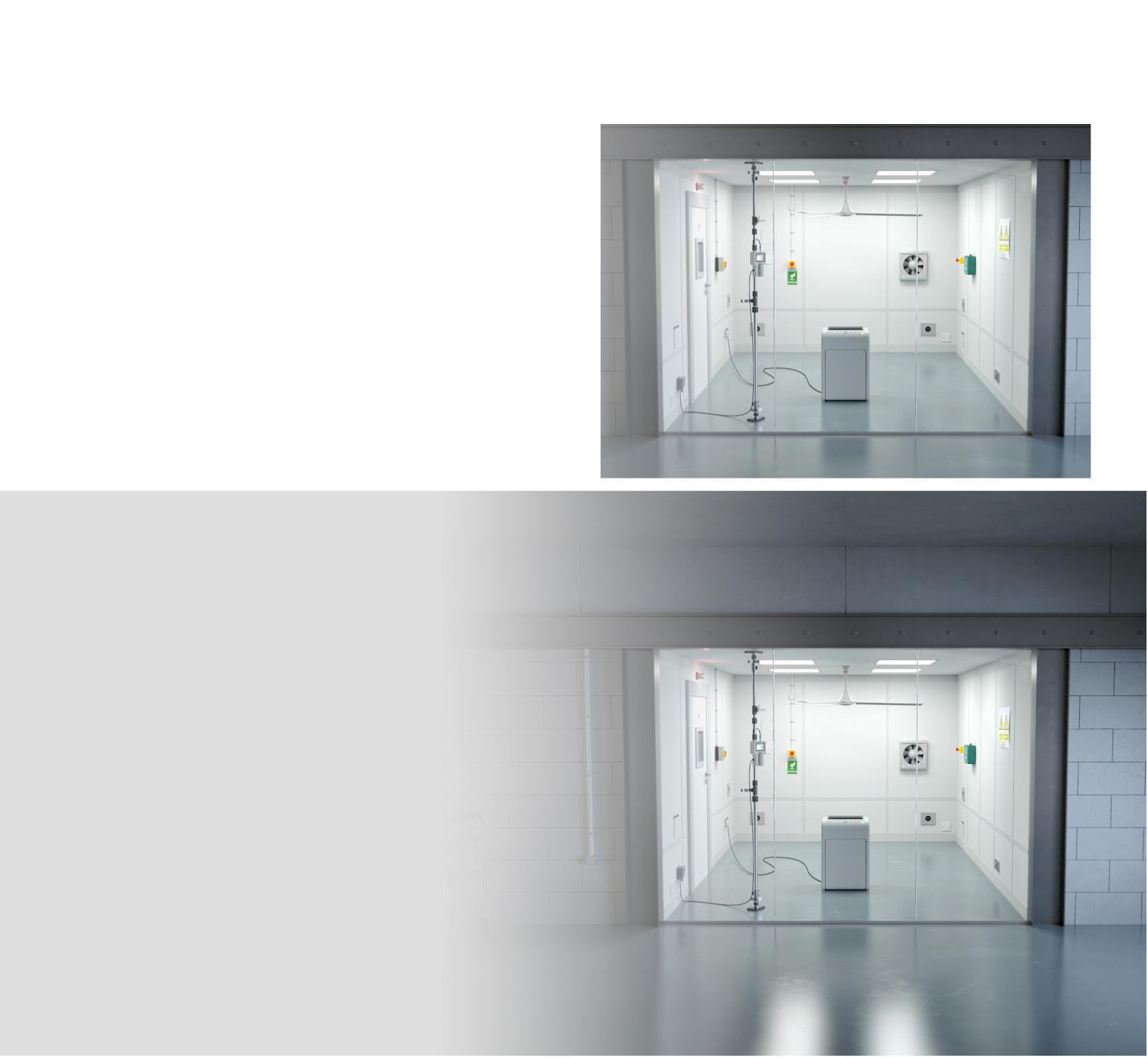
Dyson purifiers are tested beyond the industry standard
We test our purifiers in a room size of 81m³, with nine sensors that continuously measure air quality. Some other manufacturers use a small 28.5m³ chamber, with only one sensor and a fan to boost circulation.
-
Industry-standard test chamber – only 28.5m³

-
Dyson POLAR test chamber – 81m³

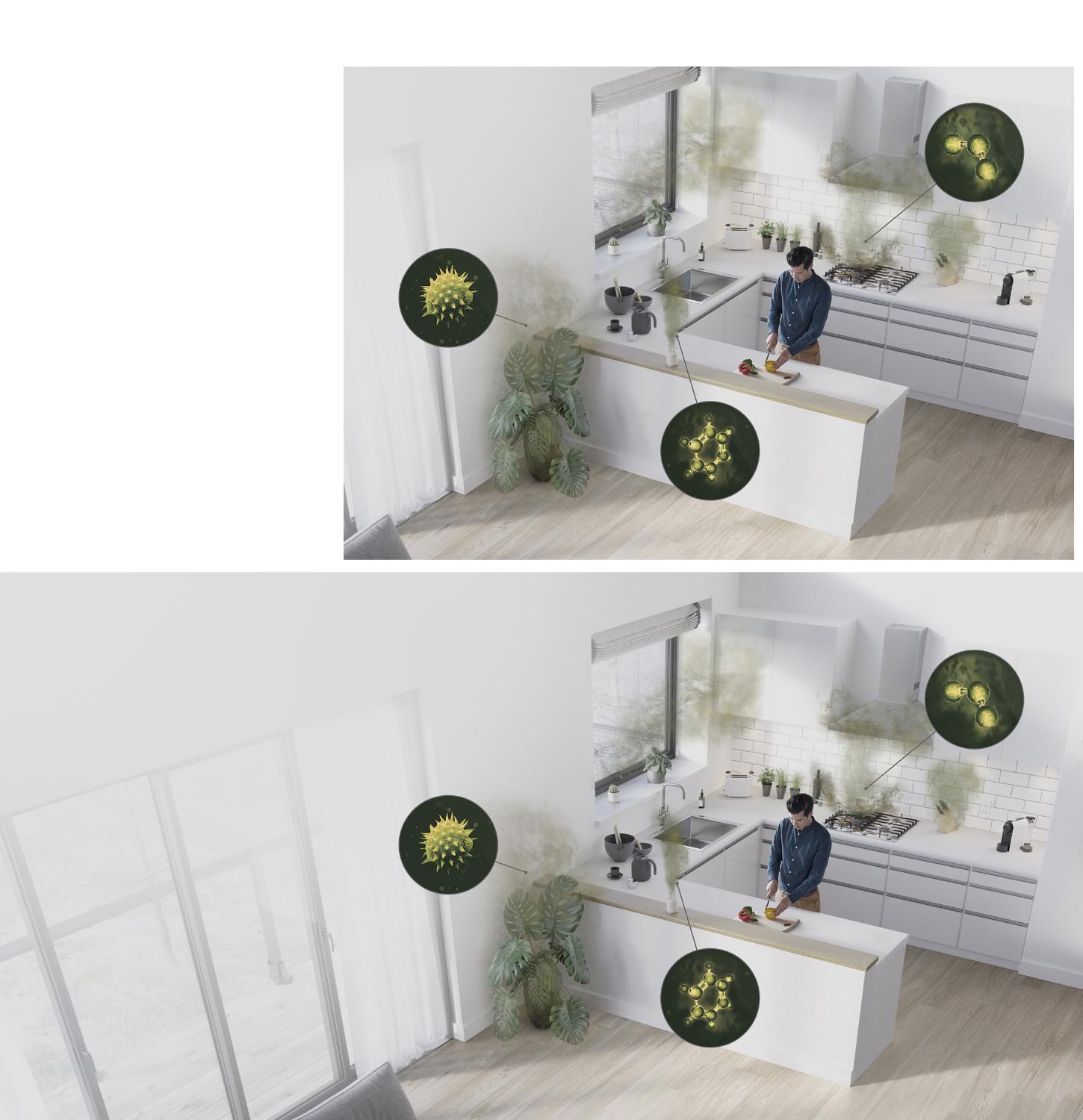
Poor air quality isn't just a problem outside. It's a problem inside too.
From plant pollen and cooking fumes, to VOCs and benzene found in sprays and candles, our homes can trap pollutants in the air. That's why Dyson purifiers automatically sense and remove them.
-
Household fumes and cooking
Odours
-
Cleaning products and candles
Benzene and VOCs
-
Gas stoves and car exhausts
Nitrogen Dioxide
-
Pollen and allergens
PM10
-
Bacteria
PM5.0
-
Industrial emissions and house dust
PM2.5
-
Ultrafine particles
PM0.1
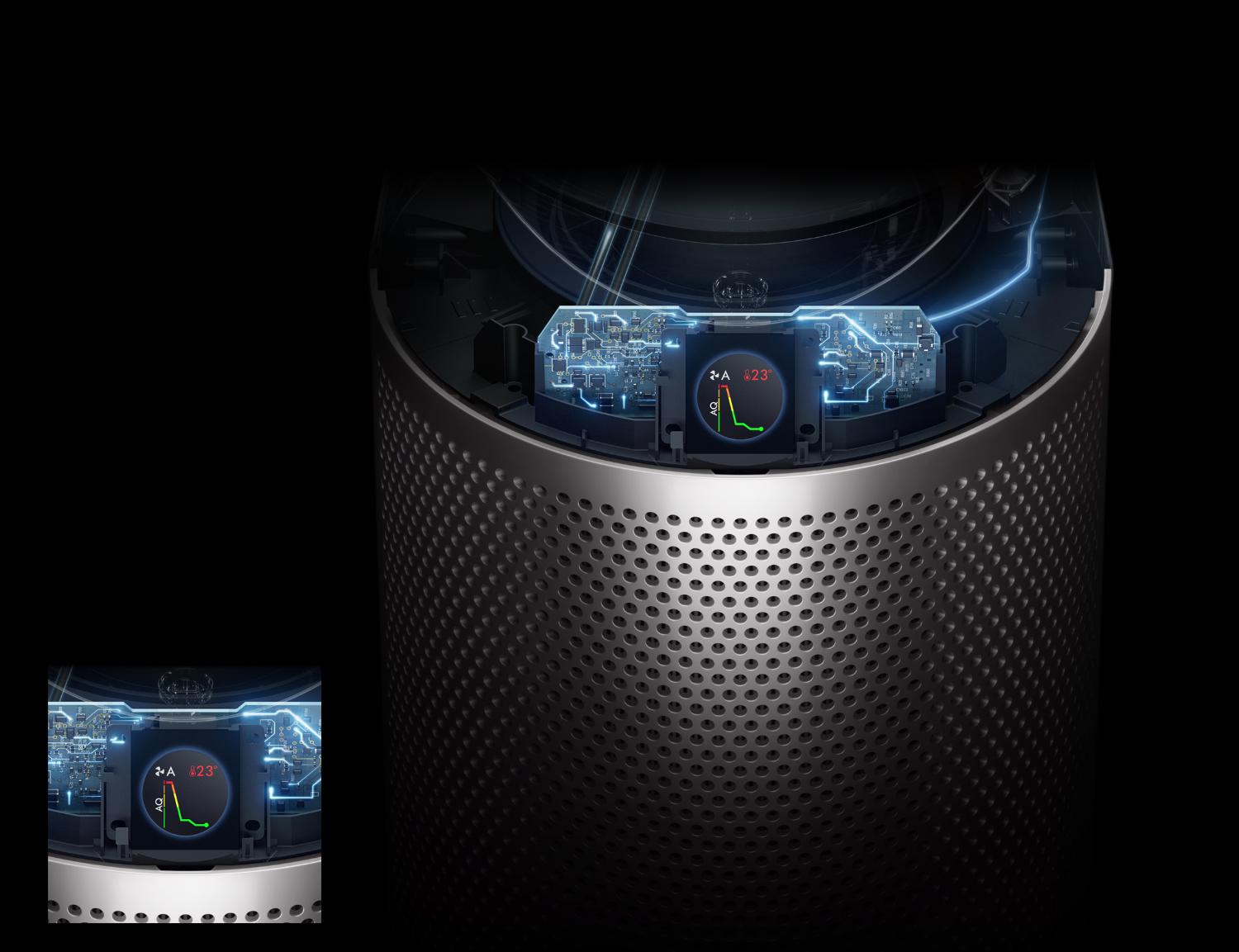
Senses and reports, automatically
Three sensors constantly analyse your air, while our unique algorithm cross-checks data every second. To precisely monitor, display and react to your air quality.
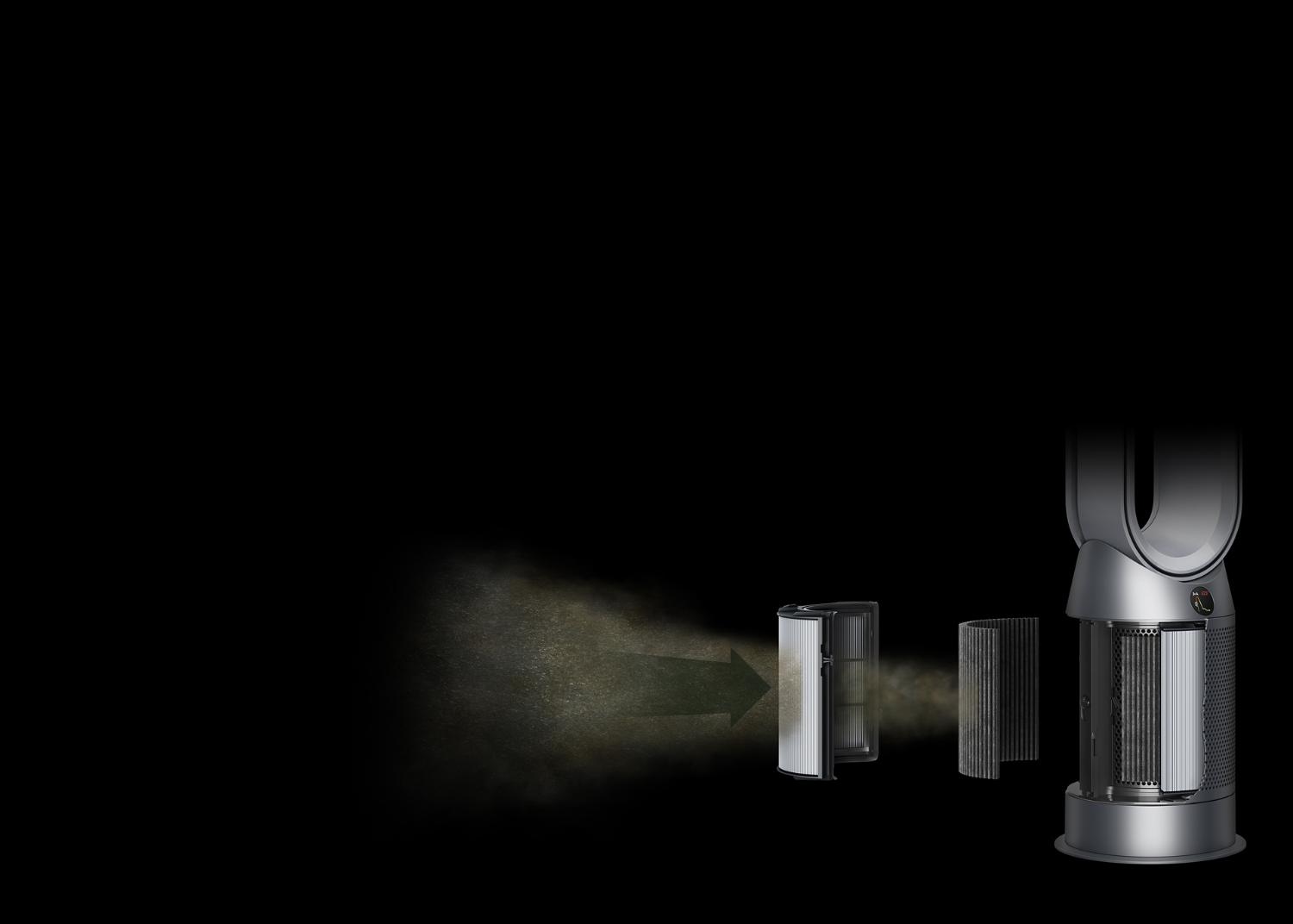
Captures and removes with HEPA filtration
HEPA filter captures 99.95% of particles as small as 0.1 microns.² Activated carbon absorbs gases⁵, odours and VOCs.
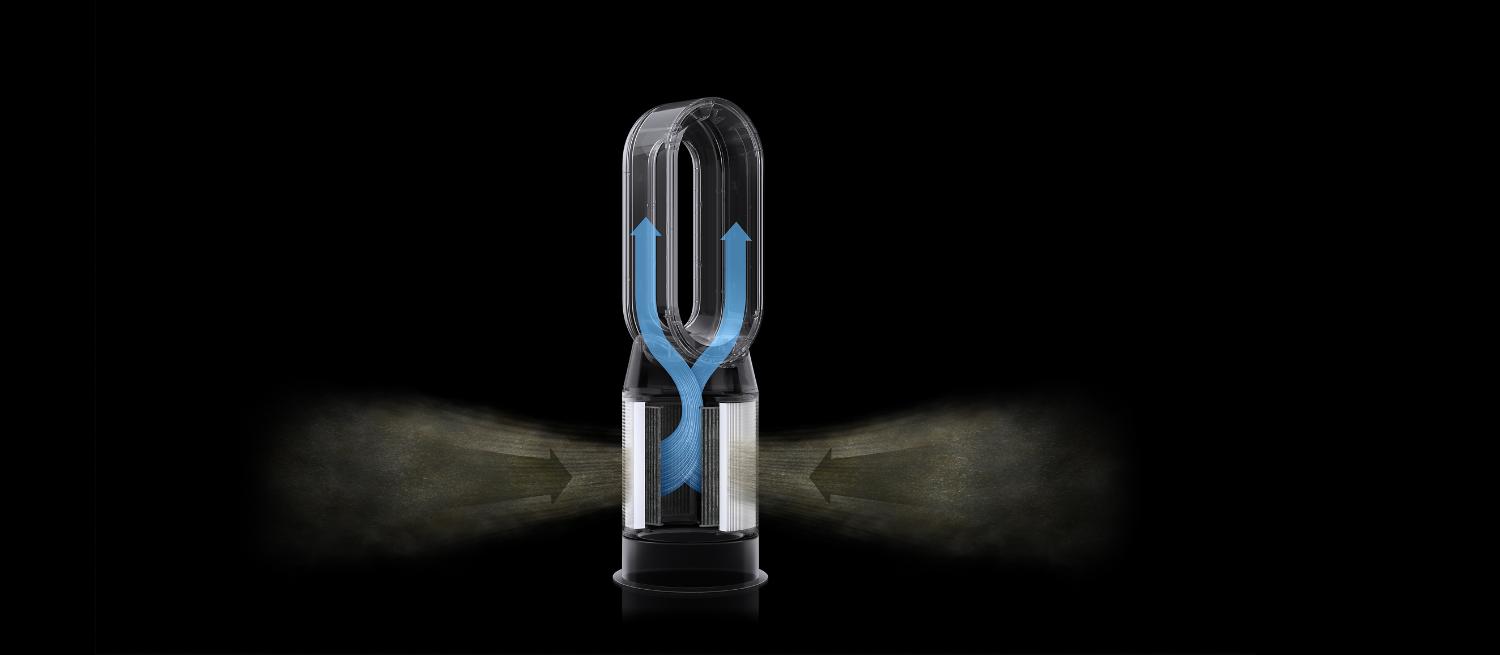
Only Dyson’s latest purifiers are fully sealed to HEPA H13⁴
To prevent pollutants leaking back into the air, it's not just the filter that's sealed to HEPA H13 standard, it's the whole purifier.⁴ So what goes inside, stays inside.
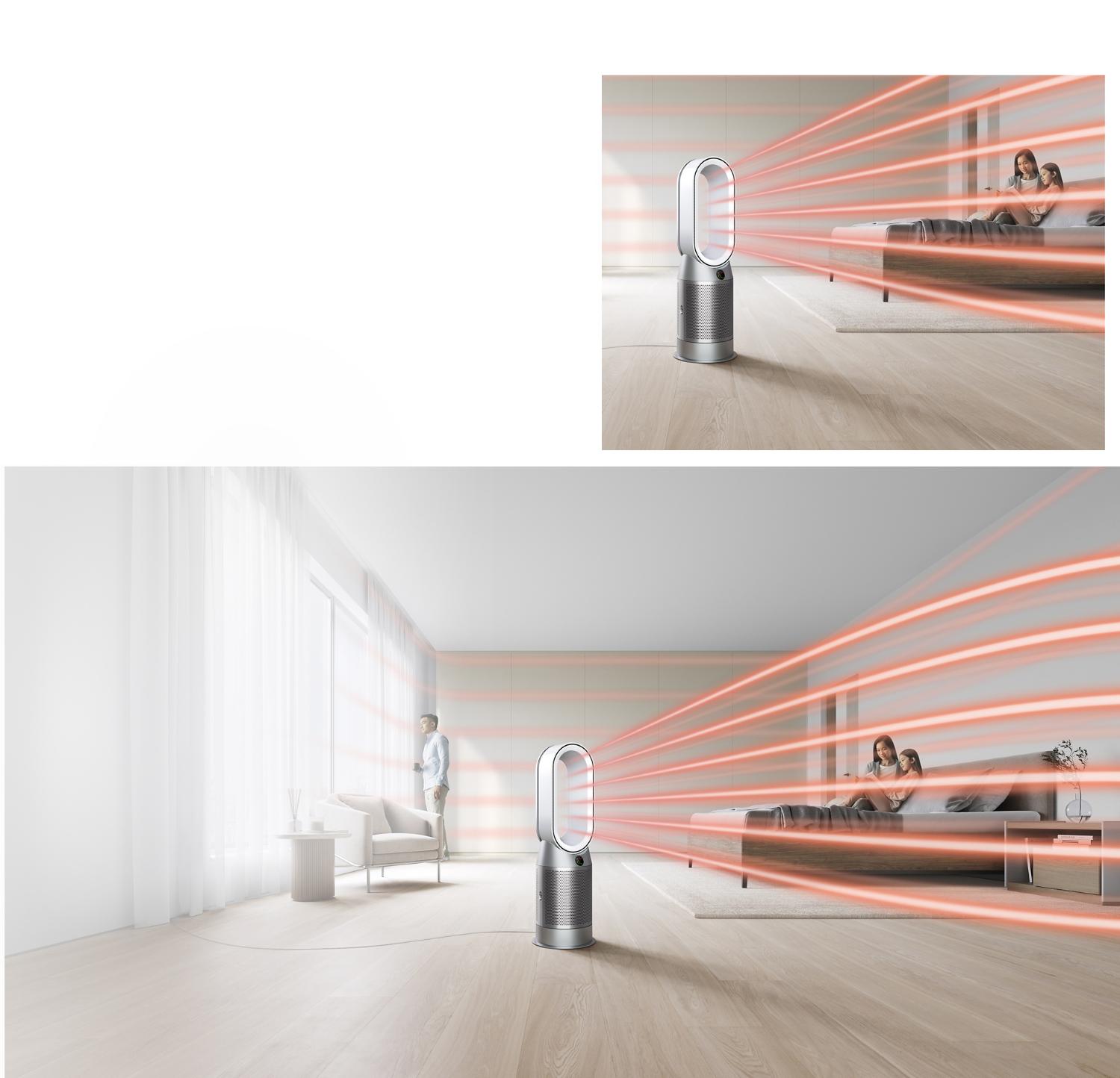
Fast, even room heating
Air Multiplier™ technology projects purified, heated air throughout the room.³ Once your target temperature is reached, heating automatically stops.
Additional features
-

Cools you in summer
In warmer weather, a powerful stream of purified airflow can cool you down.
-

Diffused mode. Purifies without cooling you.
Airflow is diverted through the back of the machine, maintaining effective purification.
-

Night mode
For lighter sleepers, it monitors and purifies using the quietest settings along with a dimmed display.
-

Easy filter care
Your HEPA+Carbon filter is easy to change and the LCD screen will alert you when it's time.
Reviews powered by Bazaarvoice
Frequently asked questions
Dyson engineers are perfectionists. Channelling our relentless dissatisfaction, we have re-engineered the Dyson Purifier range to be our first purifiers fully sealed to HEPA H13 standard. Capturing 99.95% of ultrafine particles and preventing pollutants from leaking back into the air you breathe.
The Dyson Purifier Cool Formaldehyde has all of the capabilities found in our advanced purification products but goes a step further to detect and destroy formaldehyde. An added solid state-sensor precisely detects formaldehyde, while our catalytic filter breaks it down into two safer molecules – carbon dioxide and water.
Formaldehyde is a polluting gas formed of carbon, hydrogen and oxygen that is commonly found in homes. Common sources of formaldehyde in your home could be: paint and varnishes, air fresheners, mattresses, furniture, household cleaners, carpets, particleboard and plywood, electronics, dryer sheets, nail polish remover, moth balls, toys, fireplaces and wood burning stoves.
We recommend replacing the HEPA+Carbon filter every 12 months. That's because over time, filters can get clogged with pollutants, and even let unpleasant odours back into the room. The machine will alert you when it’s time to change filters. A filter life reading can be found on the LCD screen. The catalytic filter never needs replacing.
- 4 Particle challenge by DEHS oil specified in EN1822 within a chamber specified in ASTM F3150. Tested in Max Mode at IBR US, for whole machine efficiency above 99.95%.

Replacement filters, engineered for your machine
We recommend replacing your HEPA and carbon filter when your machine alerts you – so it continues to run effectively.


